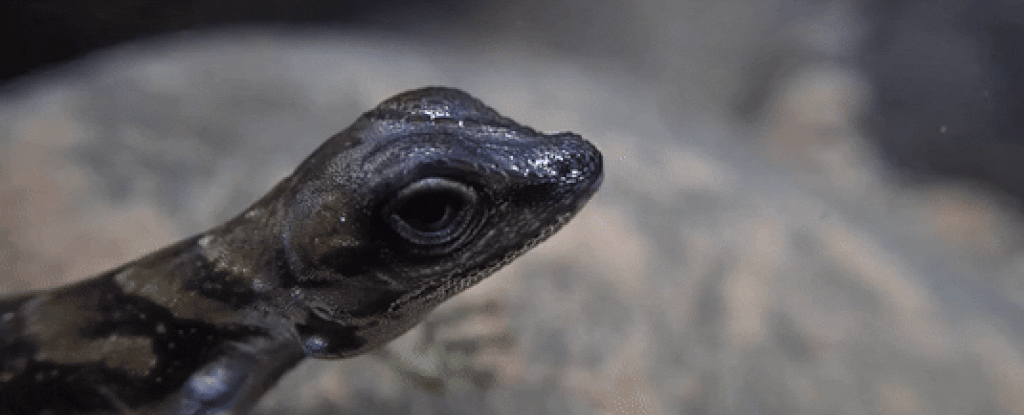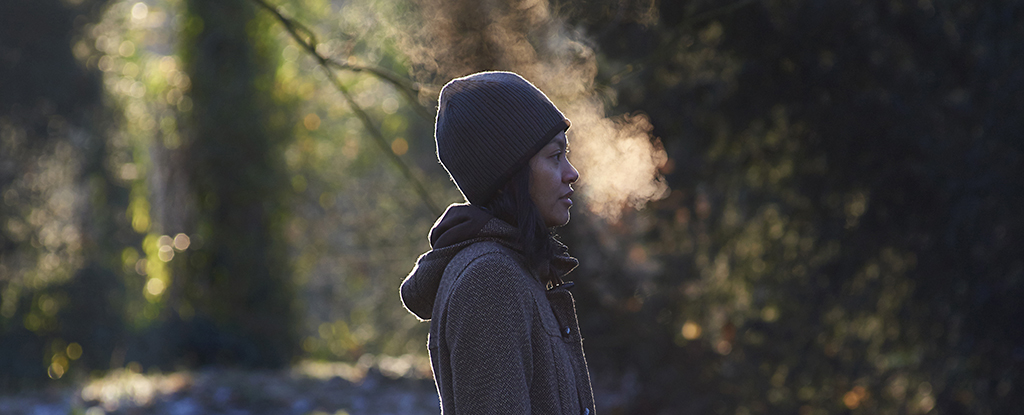Little lizards that wear snout bubbles underwater really do seem to be using them as tiny scuba tanks.
Water anoles (Anolis aquaticus) made headlines a few years ago when they were caught proudly holding onto shiny pockets of air while submerged in their Costa Rican streams.
Now Binghamton University ecologist Lindsey Swierk’s experiment provides new insights into this odd adaptation, likely a tactic to escape the clutches of a forest full of hungry predators.
“This is really significant because this is the first experiment that truly shows adaptive significance of bubbles. Rebreathing bubbles allow lizards to stay underwater longer. Before, we suspected it – we saw a pattern – but we didn’t actually test if it served a functional role,” says Swierk.
To evaluate the effect of the air bubble’s presence, Swierk collected 30 water anoles from their forest home and treated half of them by smearing an emollient moisturizer on their adorable little snouts, while the controls received a plain water snout treatment instead.
“Lizard skin is hydrophobic. Typically, that allows air to stick very tightly to the skin and permits this bubble to form,” explains Swierk. “But when you cover the skin with an emollient, air no longer sticks to the skin surface, so the bubbles can’t form.”
One at a time, the anoles were then released into a tank filled with fresh stream water, kitted out with a single perching rock beneath the surface. Their behavior was observed and recorded on film.
All but two of the anoles immediately dove down and clung onto the submerged rock on release. Sure enough, the lizards that could still hold bubbles on their snout remained submerged about 30 percent longer than those who had received the moisturizing treatment.
“The surplus air carried inside and on the hydrophobic body surface of semi-aquatic anoles works like a human diver’s scuba tank to extend dive time by providing an additional volume of accessible air,” Swierk writes in her paper.

Other animals like insects are also known to use bubbles to help them stay underwater for longer. As insects are so small, they can even rely on oxygen that diffuses into the bubble to keep breathing while submerged. So researchers are now testing oxygen levels in the water while the anoles are submerged to see if this is also a possibility for the larger animals.
It’s possible the semi-aquatic reptiles have back-up air pockets around their heads which may serve to refill their main bubble, a feature that could be explored in future studies.
Swierk’s experiment confirms water anoles are the first known backboned animal to use bubbles to help them breathe underwater, likely to escape becoming something else’s dinner.
“Anoles are kind of like the chicken nuggets of the forest. Birds eat them, snakes eat them,” says Swierk.
“By jumping in the water, they can escape a lot of their predators, and they remain very still underwater. They’re pretty well camouflaged underwater as well, and they just stay underwater until that danger passes. We know that they can stay underwater at least about 20 minutes, but probably longer.”
The need for survival is certainly an inventive force.
This research was published in Biology Letters.





